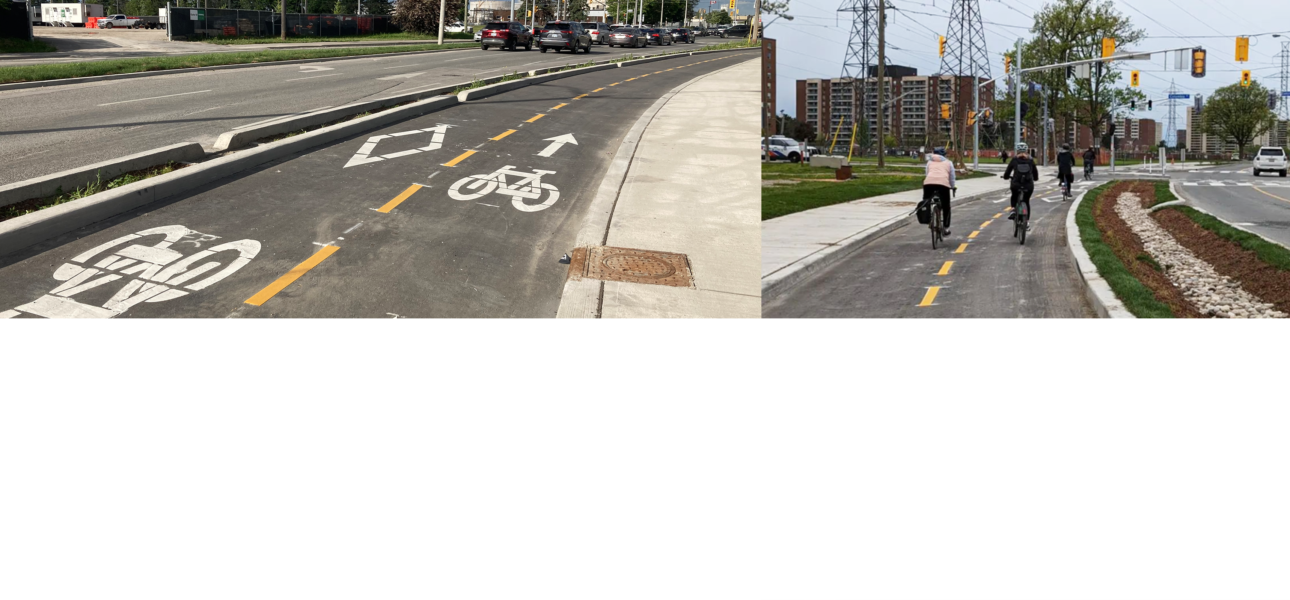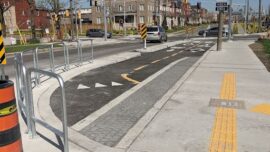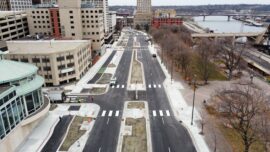Alta Canada worked with the City of Toronto to design and build Toronto's first green gutter, which separates bikeways and trails from traffic and serves as a model for sustainable design.
The project, York University Cycling Connections, included the construction of a kilometre of separated bikeways and multi-use trails – as well as major improvements to two signalized intersections, Murray Ross Parkway at Evelyn Wiggins Drive and at Keele Street – was part of a vision to grow and connect the cycling network between York University, the Finch West Hydro Corridor Trail, and Finch West TTC station. The project included the City’s first green gutter, but also the City’s first protected intersection.
The team prioritized green infrastructure and sustainable design from the beginning – referencing the City’s developing Green Infrastructure Standards and Wet Weather Stormwater Plan. The green infrastructure tied into the protected intersection design, which was the starting point for the project to meet the City’s goals for a design approach that centers safety for all vulnerable road users, improves connections for people on bikes at intersections, and reflects TransformTO, VisionZero, and Complete Streets frameworks.
Green Infrastructure
The project team made green infrastructure and low-impact development features integral to the design early on. While Toronto’s Green Infrastructure Standards were still in development, the team worked together on a green gutter and bioswale — used as creative and functional separation treatments between the road and the on-street bidirectional bikeways.
The goal was to retain run-off patterns to existing curb and catch basins while minimizing impermeable surfaces as part of a retrofit roadway re-purposing scenario. The project team selected appropriate plantings for the green infrastructure features. During the design phase, there were extensive discussions on details for bioswale and green gutter inlets and outlets. Post-implementation, the team has been observing and monitoring their functionality. During construction, the team worked together to manage constructability issues given the complexity of materials and their placement in the cross-section of the bioswale. The City is also observing the resiliency of various specified plants over time. As with trying anything new, there were several lessons learned. Most related to drainage, planting, constructability, and maintenance and continue to be identified and incorporated into future practice.
Accessibility
The project had other innovative features, including design for accessibility and unique signal phasing. The project team prioritized accessibility, paying particular attention to the separation treatments between pedestrian and cycling space and to treatments at complex junctions, such as where a multi-use trail intersects a sidewalk and a bidirectional cycle track.
Signal Infrastructure and Phasing
Significant signal phasing modifications provide safer travel for pedestrians, transit users, and bike riders. Both intersections were redesigned with the addition of bike signal heads, bicycle detection, and a variety of features to allow intuitive crossings. A fully protected right turn with transit signal priority was implemented to protect pedestrians and people on bikes from turning vehicles, while keeping transit vehicles moving.




